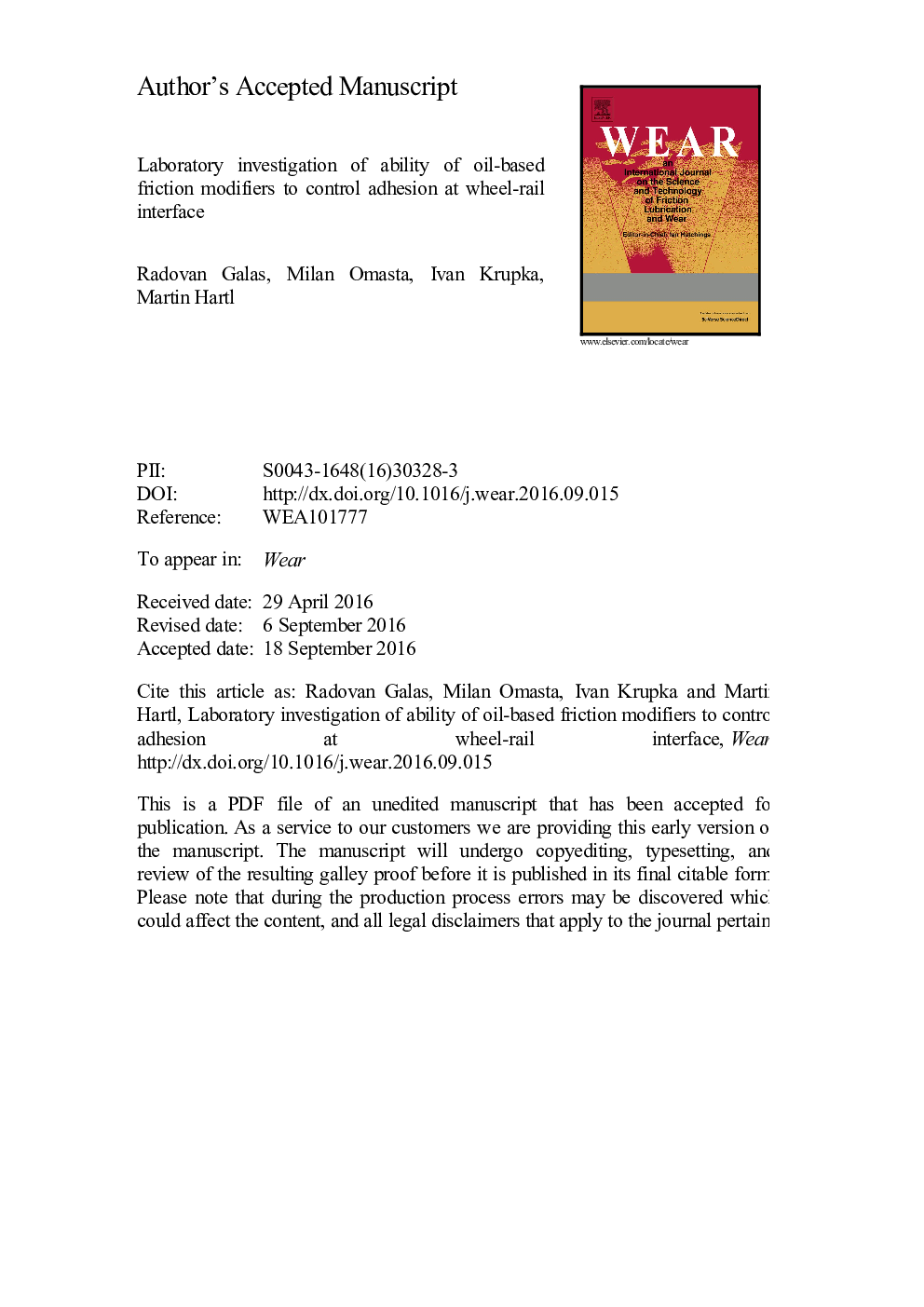| Article ID | Journal | Published Year | Pages | File Type |
|---|---|---|---|---|
| 4986899 | Wear | 2016 | 36 Pages |
Abstract
In the last few years, top-of-rail friction modifiers have been designed and used in many railway systems all over the world. These adhesion enhancers are applied by either off-board or on-board system in order to achieve the intermediate level of friction and positive adhesion curve. Previous scientific effort was mainly focused on the effects of water-based friction modifier on adhesion, rolling contact fatigue, railway noise and corrugation formation. The objective of this study is to investigate the abilities of oil-based friction modifiers to control adhesion and reduce wear at wheel rail interface. For this purpose, two commercial oil-based friction modifiers were particularly utilised. A ball-on-disc tribometer was employed to investigate their traction and braking performance for various slip ratios under dry conditions. Furthermore, the effect of friction modifier amount has been studied. At the end of the performed tests, wear rate, surface damage and changes of surface topography were determined and compared to dry and oil-contaminated contact. The results indicate that oil-based friction modifiers are able to control adhesion in wheel-rail contact but it is strongly dependent on the applied amount of friction modifiers. Regarding to the friction behaviour and wear, the content of metal particles seems to be the crucial parameter.
Related Topics
Physical Sciences and Engineering
Chemical Engineering
Colloid and Surface Chemistry
Authors
Radovan Galas, Milan Omasta, Ivan Krupka, Martin Hartl,
